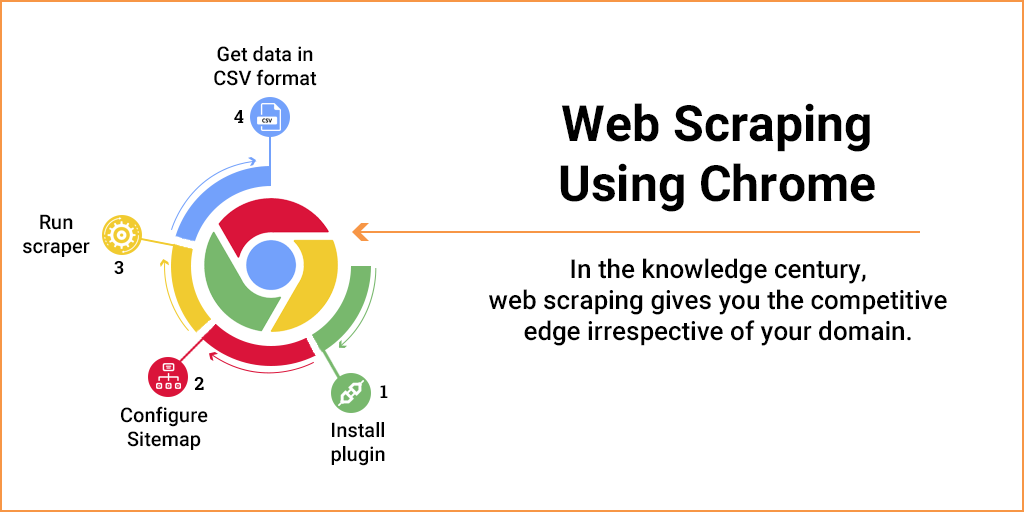- Data Scraper Extension
- Web Scraper Extension
- Web Scraping With Chrome Extensions
- Web Scraper Chrome Extension Reddit
Scraperis aGoogle Chrome extension. Scraper is a handy scraping tool, perfect for capturing data from web pages and putting it into Google spreadsheets. This tool stands in line with the otherscraping software, services and plugins.

Oct 24, 2020 Web Scrapper Chrome Extension First of all add the “Web Scraper — Free Web Scraping” chrome extension from the chrome web store. As I have already added it so it shows remove from chrome.


Web Scraper is a chrome extension for scraping data out of web pages to Excel Spreadsheet or database. It allows you to create a plan/sitemap. According to that plan/sitemap a website is traversed and the data is extracted. The extracted data can be exported to CSV or stored in CouchDB. It also supports scraping from multiple pages with pagination. Web Scraper is a chrome browser extension built for data extraction from web pages. It can extract data from multiple pages. Using this extension you can create a plan (sitemap) that specifies how a web site should be traversed and what should be extracted. How to use Web Scraper? There are only a couple of steps you will need to learn in order to master web scraping: 1. Install Web Scraper and open Web Scraper tab in developer tools (which has to be placed at the bottom of the screen for Web Scraper to be visible); 2. Create a new sitemap; 3. Add data extraction selectors to the sitemap; 4. Scraper is a Google Chrome extension. Scraper is a handy scraping tool, perfect for capturing data from web pages and putting it into Google spreadsheets. This tool stands in line with the other scraping software, services and plugins.
Get Started
Let’s start with installation of this Chrome extension. You may get it here. After installation and activation, go to Londonstockexchange indexes and right-click on any link in the left index list and select ‘Scrape similar’:
Scraper Dashboard
A new window will open and you should see something similar to the one below. Scraper has two options for identifying the parts of the page you want to extract, XPath selector or JQuery selector. Those identify multiple elements (e.g., a table or a list), rather than a single HTML element. XPath provides a way to identify parts of the XML/HTML structure to extract content. To become more familiar with XPath, just visit “About XPath” or take a look atw3schools.In this example, Scraper should default to //td/a/@href. Here’s a quick explanation of how to read this query:
- Since it starts with // it will select “nodes in the document from the current node that match the selection no matter where they are”.For me, this is a trigger to read the query from right to left as we are matching an endpoint pattern.
- “@href”refers to the attribute whose name ishref; that is the URL we need.
- “a”refers to the<a>node.
- “td”refers to<td> within the structure.
Data Scraper Extension
You may edit the XPath expression, whether atSelectoror atColumnsarea, as well as change the column names. Click “Scrape” and the Scraper will reload with improved results. In the picture above, I added/@hrefto get only URLs rather thanLinknames too.
Refining & Editing Results
As you notice, the URLs we got from the web are just suffixes with a base URL missing. So now, I’ll concatenate using the in-built Google Docs function:CONCATE(string1, string2). Get the base manually online athttp://www.londonstockexchange.com. Type in the adjacent cell=CONCAT(“base url”, A2)and press enter. Don’t forget: the strings are to be always quoted when in functions, indexes not:
Now, select cell B2 and fill the column down to get full URLs for all the links. That’s it.
Web Scraper Extension
How to select and auto-fill: put the cursor into the bottom-right corner of a cell, turning its image into a thin cross, press it and pull it down to auto-fill.
Other Points to Mention
When you want to scrape tabled structures, select an area and again right-click “Scrape similar”:
This Scraper doesn’t identify images, unless you specify a link to image inside the HTML element using an additional Xpath selector, as in the picture below:
Web Scraping With Chrome Extensions
How to Get an Additional XPath Selector to Image Link
- Enable Google Chrome developers tool by F12 or Ctrl+Shift+I.
- In the tab that appears, pick the loupeto point (& click) at the element, and then right-click at the highlighted element in the tab and selectCopy XPath!
- I cut the last part of XPath expression to be an additional selector, the last part being‘/img’ and I added‘@scr’ to select the very ‘scr’ attribute value.
Web Scraper Chrome Extension Reddit
No sorcery, just try it!

